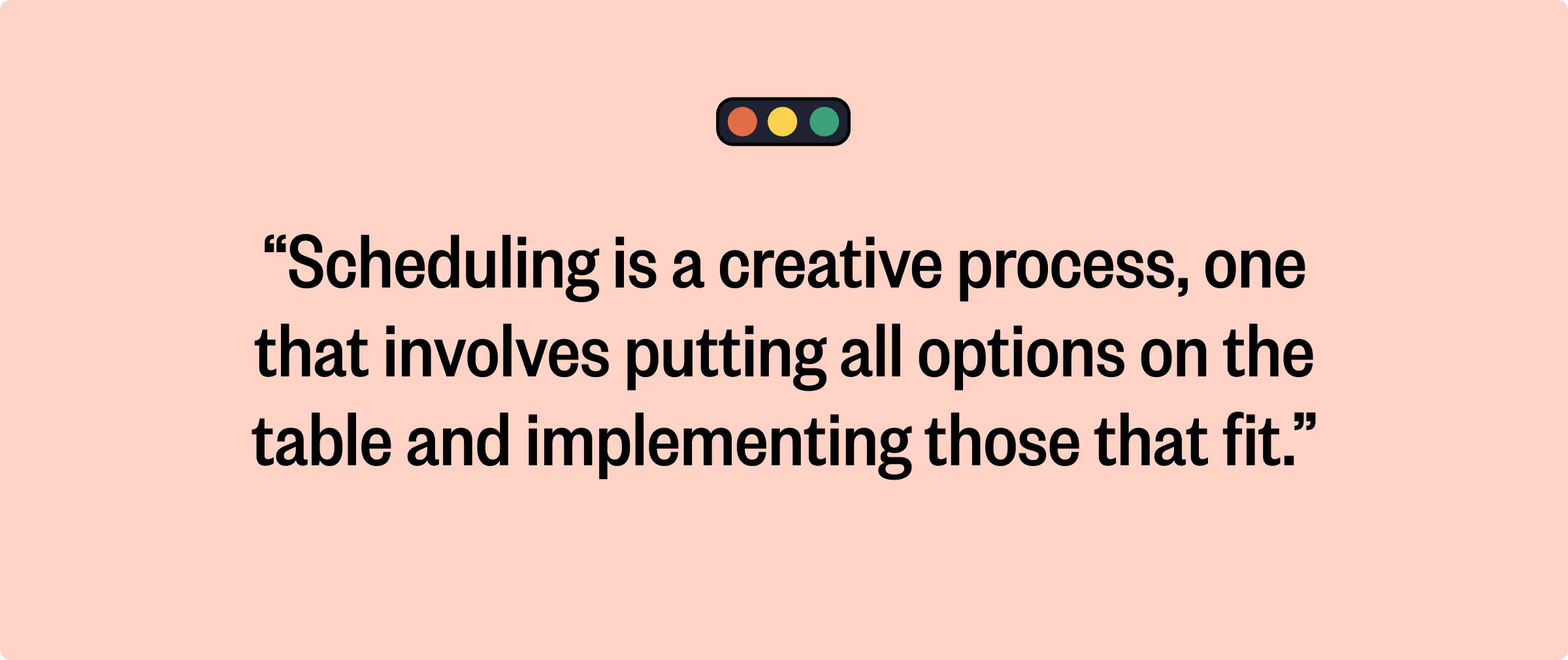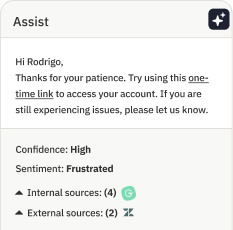6 tips for driving better scheduling practices

Better scheduling isn’t a destination, it’s an ongoing journey with several detours and sights along the way. And if you want to create schedules that positively impact your agents, employees, and business returns, it’s a journey you must embark on with a flexible mindset and a willingness to get lost every now and then.
That’s not to say there won’t be road signs and maps along the way. In fact, there are several well-traveled paths that can help inform the unique trail your own scheduling efforts blaze. Here are six helpful tips that will help you go a greater distance than simply calculating staffing requirements and putting schedules together ever could:
1. Clarify your organization’s values
If you want to make sure the contact center has the support and resources it needs, you have to get clear about what the organization cares about most. Be ready to engage your organization’s senior leadership in discussions that help you answer the following questions:
- What’s the contact center’s mission?
- How committed are you to good service, even when the forecasts may be uncertain?
- What are your priorities? Which activities get done first?
- What alternatives exist to maintain consistent service levels? Backup from other departments? Outside help?
2. Resolve power struggles with education
Anyone who’s worked in forecasting and scheduling knows how challenging it can be. Between requests from other areas preempting schedules, unplanned marketing campaigns, unannounced schedule exceptions among agent teams, and unclear lines of authority between supervisors and workforce planners, it can get a little messy.
The good news is that these challenges are not insurmountable—unless, of course, they go unaddressed. By educating all involved on the importance of accurate forecasting and scheduling, you can mitigate the drama.
3. Include all activities on the schedule
Unfinished projects. Administrative work. Reading updates. Coaching sessions. All too often, necessary contact center work falls outside of what’s accounted for on the schedule. If left unchecked, this can exact a heavy toll on morale and quality of service. Take a comprehensive inventory of all activities so you can create schedules that genuinely reflect how contact center employees are spending their time.
4. Get creative with your scheduling approach
When it comes to scheduling and staffing, there are a lot of defeatist attitudes in the contact center. But no one should feel resigned to thinking they’re going to get what they get and that’s that—even in relatively restrictive environments. Scheduling is a creative process, one that involves putting all options on the table and implementing those that fit.

When building a schedule, consider these alternative approaches:
- Harness conventional shifts. Most organizations have a core group of agents who work a traditional 9–5 during the five-day workweek.
- Use hiring to your advantage. When hiring new agents, take into consideration the hours and days they are generally available to work.
- Adjust breaks, lunch, coaching, and training. Even the slightest adjustments to when these activities are scheduled can pave the way for more agents to handle contacts at the right times.
- Stagger shifts. Try scheduling one shift at 7 a.m., the next at 7:30 a.m., the next at 8 a.m., and so on until the center is fully staffed for busy mid-morning traffic.
- Offer concentrated shifts. Given the choice, some employees will opt to work fewer days with longer hours while others would rather work fewer hours across more days—even if that amounts to a six- or seven-day workweek.
- Use an envelope strategy. This refers to scheduling more staff than would generally be required for customer contacts alone. The idea is to move in and out of various types of work in response to changing circumstances.
- Offer overtime. No additional training is required, and many agents will volunteer for the extra work.
- Give agents the option to go home. Many organizations provide leave without pay or voluntary time off when workloads slow down.
- Schedule part-timers. When available and feasible, this is a popular and common approach.
- Establish reinforcements. When contact-handling duties are combined with other tasks, such as correspondence or data entry, the agents assigned to these collateral duties can act as reinforcements when the workload gets heavy.
- Create a swat team. This approach takes the reinforcement method to the larger organization, where employees from other areas help handle customer services as needed.
- Arrange for some agents to be on call. This option can work in situations where events can’t be precisely predicted. Typically, for it to be effective, agents must be equipped to work from home.
- Offer split shifts. Though this conjures up images of college students, a group of long-time employees in an insurance company volunteered to work in the mornings and then come back for the less popular evening shift. Turns out some people are happy to have time off midday.
- Get help from an outsourcer. With the help of top-tier outsourcers, your contact center can get the leverage it needs to quickly ramp up in response to changing workloads.
- Collaborate with other organizations. If two contact centers have different seasonality patterns, they can lend agents to one another to help each company effectively handle peak contact periods while minimizing costs that would be incurred if hiring and training temporary staff.
- Use a gig-economy approach. More organizations are beginning to use Uber- or Lyft-like scheduling and surge pay to cover high demand around holidays and off-hour shifts.
It’s not an exhaustive list but you get the idea. There are many avenues you can take for creating better schedules. Collaborate with your agents, put all options on the table, identify the approaches that work best for your team, and use what you learn to make sound scheduling decisions.
5. Model different schedule scenarios
Nine times out of 10, executing work as efficiently as possible is the goal. But sometimes it pays to do some extra homework. By creating test schedules with different sets of variables, you can open your eyes to different possibilities and potential solutions.
What’s the impact of changing contact-routing alternatives? Agent group structure? Schedule horizon? Training and meeting schedules? Shifts?
Modeling these different scenarios takes time, but the outcomes will pay dividends in the form of better decisions that are rooted in a holistic understanding of tradeoffs and points of leverage. Good scheduling software is your friend for this one.
6. Ensure the process is flexible and inclusive
Effective scheduling processes will always involve a certain amount of trial and error. Make sure your routing contingencies are simple enough to manage, and that you’re getting people involved in helping to identify scheduling possibilities and solutions. Educating agents on the implications of service level, quality, and the impact of each person is essential. Do what you can to provide agents with schedule preferences and as much flexibility as possible.
Scheduling is a much bigger deal than many people realize. The schedule is the pivot point in work-life balance. Yes, scheduling enables you to match resources with workload, but it’s also a creative process that can support your employees’ needs and well-being—one that can ultimately earn you high levels of commitment.
Use better scheduling practices as an opportunity to build an engaged culture—one schedule at a time.





